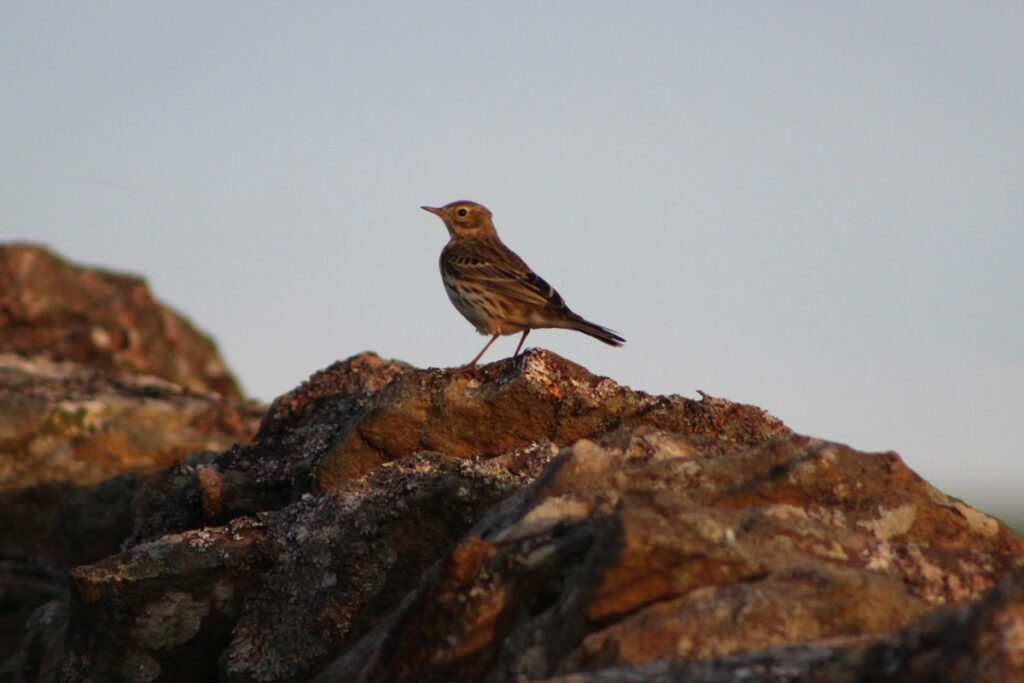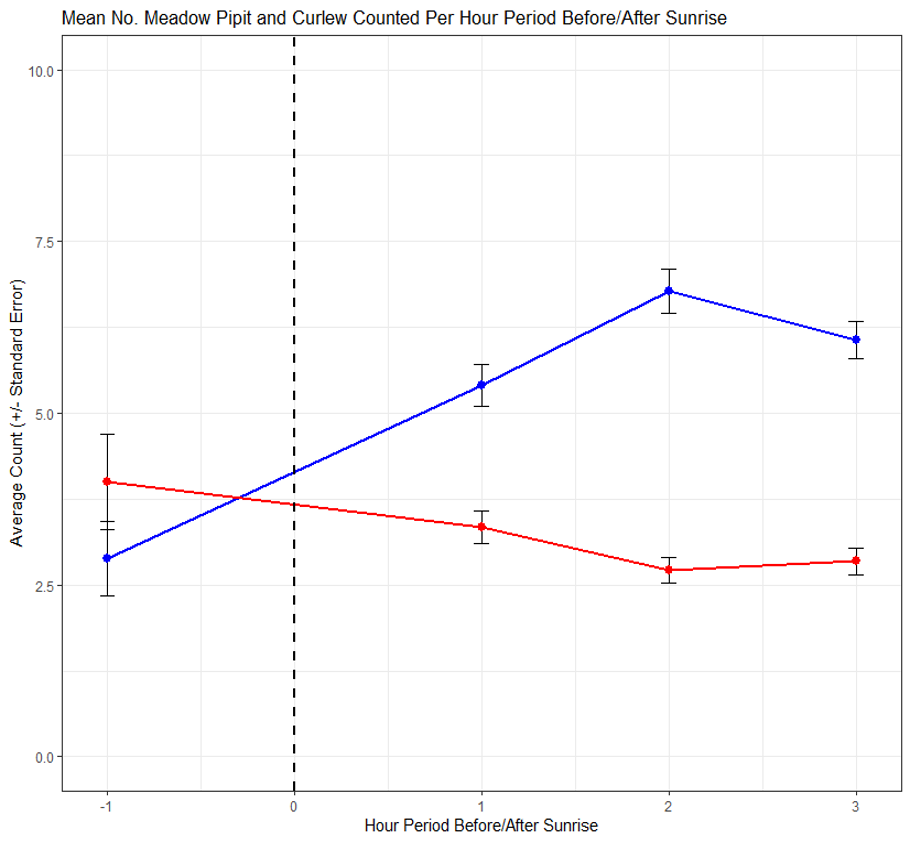By Liam Thompson, GWCT Uplands Research Assistant
One of the first tasks when I started my role as Uplands Research Assistant was to investigate if there was a relationship between the start time of a transect and the number of sightings of meadow pipit, the most common insectivorous moorland bird and a key food of breeding merlin. The period immediately following sunrise is usually said to be the best time to survey for most diurnal species, but was it the same for pipits?
To do this, I was given moorland bird transect data collected in Teesdale from previous years (2016-2021) and asked to incorporate sunrise and survey times. Once the sunrise time for each survey date was included, the time difference between sunrise and the transect start time was calculated and then the average number of meadow pipits counted per 1km transect within each time period.

A graph was produced to show meadow pipits counted per km transect in relation to sunrise time (blue line), and one for curlew as a comparison (red line). Meadow pipits increased for the first two hours after sunrise, but in contrast curlew tended to decline. Sunrise is represented by the vertical dashed line in the figure below.

The graphs support the well-established fact that surveying immediately after sunrise is best for detecting waders such as curlew, with detection gradually declining from dawn. However, based on these data, the best time to survey specifically for meadow pipit appears to be slightly later, with the numbers recorded peaking two hours after sunrise.
These findings will better inform the timing of our meadow pipit surveys within merlin territories in the coming survey season. These surveys will be carried out in areas that have previously supported nesting merlin, successful or otherwise, to investigate whether availability of avian prey is a factor limiting merlin numbers within the study area. This, in addition to our data collection on habitat components, will contribute to our understanding of how grouse moor management practices may influence merlin numbers.
